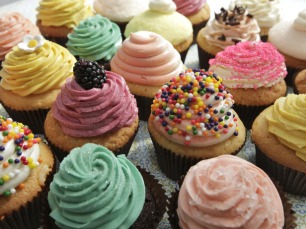I love baking cupcakes.

Every person I know gets cupcakes on their birthday; a carefully crafted work of art and yumminess. The best part is not even the cupcake, but the frosting. I love taking the time to carefully decorate the tops of cupcakes, adding a sprinkle of color, or trying a new technique.

Today, I came across a new recipe for Perfect Cupcake Frosting. I’m dying to try it. However, I do not want to make a whole batch of cupcakes, just half a batch. This happens often. Sometimes, I want to make 4 cupcakes or get a little crazy and bake 24, and on some days, I just want 2, for myself.
So today, I’m making 12 cupcakes. I’ll need to half each ingredient in the frosting recipe in order to create half the amount of frosting.
2 packages of cream becomes 1 package of cream cheese because 2 x 1/2 = 2/2 or 1.
I can also perform conversions by thinking in terms of proportions. 4 cups of powdered sugar is to 24 cupcakes. How many cups of powdered sugar is to 12 cupcakes?
4/24=x/12
Using cross multiplication, 48=24x
Therefore, x=2
I’ll be needing 2 cups of powdered sugar.
Converting measurements doesn’t always give me nice, whole numbers. Sometimes, a little estimation is necessary, and that’s okay. The frosting (and cupcakes) will taste good.
Here are some proportion resources for students.
This website offers many ratio and proportion worksheets and allows students to understand real-life applications of proportions.
A flipchart that allows students to practice their proportion skills in real world settings.
Lesson plan: Fractions and Recipes. This lesson plan gives students opportunities to make conversions in order to adjust recipes based on the number of people eating.
